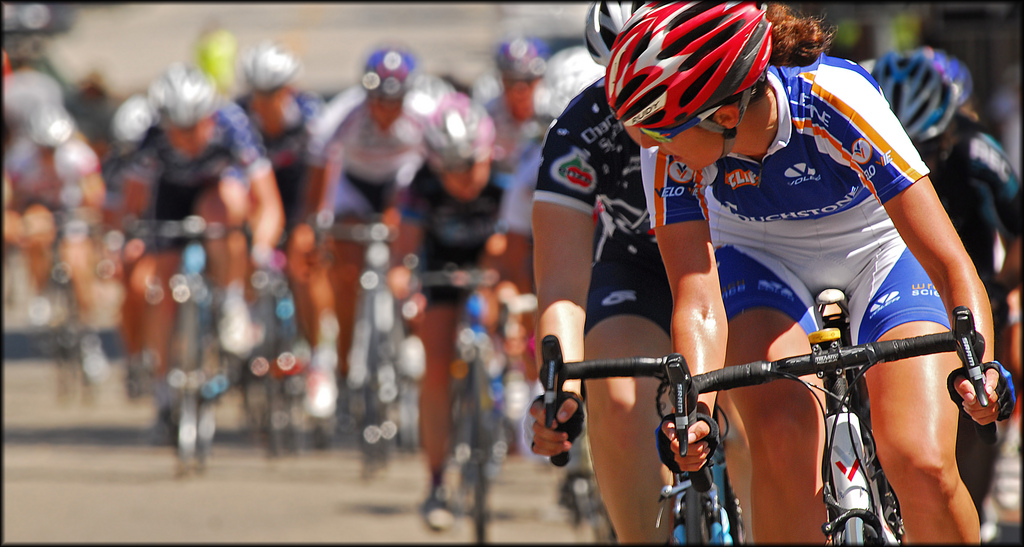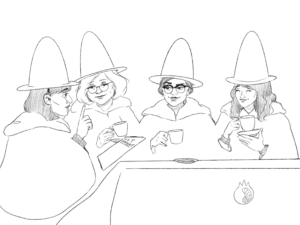Too often throughout its history, professional cycling has only made mainstream headlines for its most egregious cheaters. From the earliest competitors in the Tour de France who tried to edge out their competitors by riding more on trains than on bikes, to the amphetamine users who doped themselves to death and the institutionally coordinated cheating of Lance Armstrong and his USPS team; from the Flandrian Inquisition of the Wevelgem Coven, to the ground-shaking revelations of Operación Puerto, there is a dark pall over the sport that is never far from the minds of its fans, even in the brightest of times. The last thing I wanted was for the bright and rapidly growing but still vulnerable subset of women’s cycling to suffer a similar public relations fate. I felt that helping to demystify some of the more avant garde competitors would be a step in the right direction. That’s exactly why I sat down with Yulia Chernykh, a professional cyclist for the Kalashnikov-Polonium-210 team who also happens to be a witch, for a rare interview at a cafe.
“Religion is derived from the Latin religare, to bind back,” she began. “The idea is that the adherent is engaged in a constant struggle of bondage with reality. My witchcraft, on the other hand, replaces existing reality with one of my choosing. It’s entirely different.”
I wondered whether this was an oblique reference to Lucienne Mallejac, a pioneering six day racer from the fin de siècle, and asked her as much. She smiled cryptically before answering, “I hope to be far more successful than her, may her god rest her soul.”
For those readers unaware, after sweeping nearly every event of the 1896 six day race at the Saint-Quentin velodrome, Mallejac revealed that she had bound a metatarsal of Saint Rosaline of Villeneuve to her right pedal with gold wire. Many at the time complained that inviting divine intervention so blatantly was an affront to sporting competition, but International Cycling Association never made any move to invalidate her victory, nor did the local race organizers. Emboldened by her success and lack of sanction, Mallejac spent the next several years leaning into her habit of religious doping, perusing reliquaries all across Europe to secure more of an edge in competition and filling her bidons with wine, asking priests of increasingly high standing to transubstantiate them. Sadly, her career was cut short in 1901, when she rode off the side of a mountain after overindulging on the blood of Christ. It wasn’t until 1946 that the Union Cycliste Internationale (UCI) finally commented on her methods, declaring that since European authorities officially denied the existence of God, it was unlikely that He would play a substantive role in sports, thus declining to disavow religious doping.

I asked Chernykh why she thought that Mallejac’s brand of preternatural doping largely died with her. “Seeking help from a divine presence that was either indifferent or imaginary was seen as both unsporting and ineffective by the teams who were hiring at the time. An unscrupulous team will overlook unsporting conduct if it’s effective. A sentimental team will overlook ineffective methods if they’re sporting. Religious doping simply had no buyers. When Lisa Ravenscroft surgically embedded a shard of the Lance of Longinus in her femur back in 1996, all she had to show for it was a horrible infection rather than a professional contract.”
“Current cyclists wishing to invite preternatural intervention in their sport have to be more innovative,” she continued. I asked her if her witchcraft was the result of that kind of innovation. Her face hardened before she replied, “It is my worldview, my belief system. It is both the substance in which I and all others are suspended as well as the fabric that I twist and alter to make my will manifest.” She took a sip of her tea and appeared to soften some. “That my belief and my sport seem to align in a specific niche at this moment are merely an expression of stochastic serendipity.”
Given the public view of witches and the rampant paranoia of performance enhancement in cycling, I asked her if she ever suffered from any stigma.
“I think some people still expect me to have a pointy hat, and maybe replace my top tube with a broomstick to fly up mountains,” she laughed. “Of course that’s impossible, since Napoleon clearcut cloud pines into extinction in the 19th century.” A faraway look took hold of her, as if she wanted nothing more than to build a cloud pine frame and make that dream a reality. The weight of her melancholy dragged her eyes and mind back down to earth, and she sighed. “Ultimately,” she continued, “the fact that I work as hard as everyone else in the peloton means that they do not suspect me of such overt advantage, but my palmares speak for themselves. Rather than unsporting and ineffective, I think I’m seen as eccentric and mysterious. In reality, I’m not so mysterious; they’re just ignorant. I welcome that ignorance, since the mystery surrounding me is at least part of the point, but I do hope that at some point the peloton and eventually the world will understand that I’m just another woman trying to make it in the world and shape it according to my will.”
In an effort to try to help bridge that connection, I asked her if she could explain one way in which her witchcraft contributed to her cycling. “Oh, that’s easy,” she said, twisting in her chair so that I could see her right calf. On it was a black smear, obviously from a bike chain. While it’s common on amateur cyclists, it’s rare to see one of these “calf tattoos” on professional cyclists, who have mechanics to keep their chains sparkling clean. “Normal, yes? Here’s the thing: It’s not grease; it’s a real tattoo. Look closely — you’ll see it’s a double helix written in both Enochian and my proprietary runes. It helps to keep the lactic acid out of my legs when I’m going into oxygen debt.”
She turned back to sit comfortably in her chair again. “There is a corresponding spell that would allow me to transfer that instead to my competitors, but that would be unsporting, don’t you think?”
I pointed out that performance enhancing drugs worsen other riders’ performance, but they are nonetheless banned.“I don’t think the UCI wants to get tangled in a literal witch hunt, given the historical baggage of such practices,” she replied curtly.
I pointed out that there is a rather broad gulf between burning someone at the stake and simply banning someone from competition.
“Just so, and there is also a broad gulf between drugs and my practices. As such, I appeal to the Air Bud principle: There is nothing in the rulebook that says that a witch can’t ride bikes.” She frowned. “On that same note,” she added, smiling, “I think most people fear that a witch might be inclined to transmute a troublesome UCI official into a dog. Who knows, it might have even happened in a certain rider’s junior career.” She laughed and lifted her tea cup again before saying, “As I said, mystery is my ally.”
As if to prove her point, a raven flew into the cafe’s window to alight upon her shoulder, speaking a language I didn’t recognize into her ear. She replied in similar phonemes before turning to me and explaining, “Please forgive me — this is my agent’s familiar. I’m afraid I have another appointment now, but thank you for your time.” With that, she paid for her tea and left me to muse over our meeting. I certainly don’t think that I succeeded in demystifying the sport at all, but obviously that would have been contrary to her own ends, especially given that her means involve disrupting the very fabric of reality. I remain unconvinced that it fits within the spirit of UCI regulations, but I doubt that I or any other force on earth could keep her from asserting her will anyway.
Featured image source: Coda2 on Flickr.




